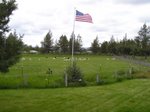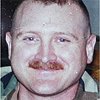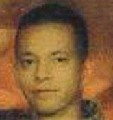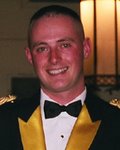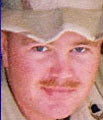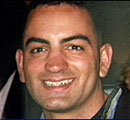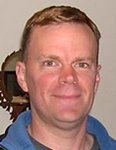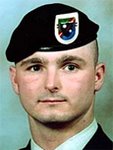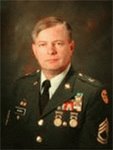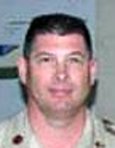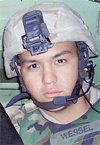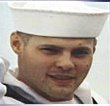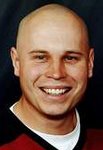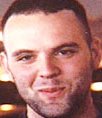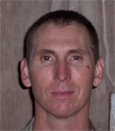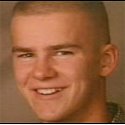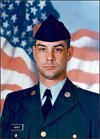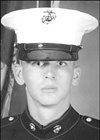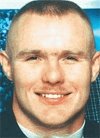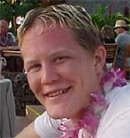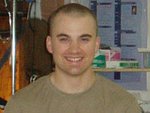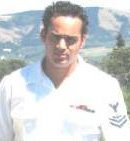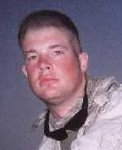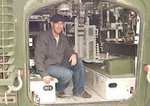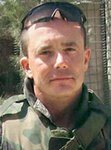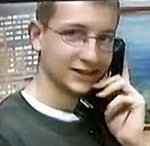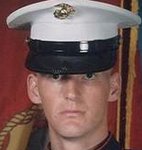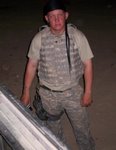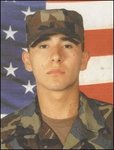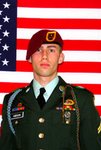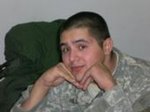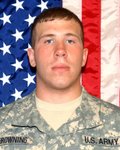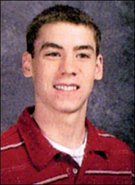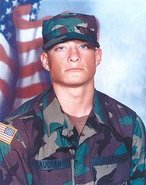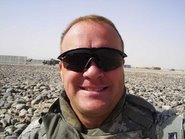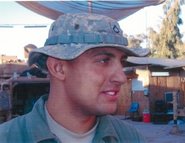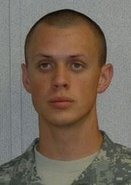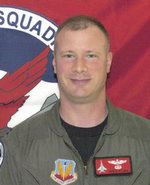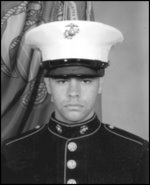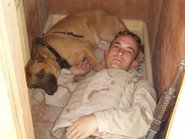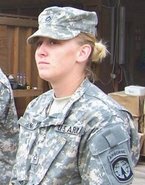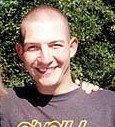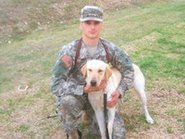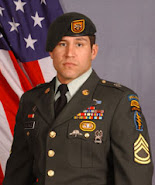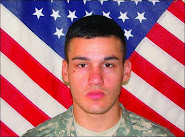 Senior Airman Jelly Larsen, pararescueman of the 64th Expeditionary Rescue Squadron scans his sector as the rest of his element team enters a building during a training exercise here Aug. 4. The 64th ERQS provides combat search and rescue support to coalition forces in the Iraqi theater of operations.
Senior Airman Jelly Larsen, pararescueman of the 64th Expeditionary Rescue Squadron scans his sector as the rest of his element team enters a building during a training exercise here Aug. 4. The 64th ERQS provides combat search and rescue support to coalition forces in the Iraqi theater of operations.
Photo by SrA Andria Allmond
 Senior Airman Jelly Larsen, pararescueman of the 64th Expeditionary Rescue Squadron scans his sector as the rest of his element team enters a building during a training exercise here Aug. 4. The 64th ERQS provides combat search and rescue support to coalition forces in the Iraqi theater of operations. Photo by Chris Hubenthal-Magarian
Senior Airman Jelly Larsen, pararescueman of the 64th Expeditionary Rescue Squadron scans his sector as the rest of his element team enters a building during a training exercise here Aug. 4. The 64th ERQS provides combat search and rescue support to coalition forces in the Iraqi theater of operations. Photo by Chris Hubenthal-MagarianThe Mission That Never Ends: Downrange Pararescue Jumpers Keep Training
332nd Air Expeditionary Wing
Story by Andria Allmond
11 August 2009
JOINT BASE BALAD, Iraq -- "Is she alive?"
"Copy. Still alive."
The pararescuemen load their patient onto the litter, carrying her off to the safety of an awaiting vehicle.
But the mission isn't over; this mission never really ends.
It's a crisis-action training scenario -- one of the many exercises employed by Air Force pararescuemen, the only members of the Department of Defense assigned the primary mission of recovery and medical treatment of personnel in friendly and hostile environments.
"Readiness is a major Air Force term that a lot of conventional military folks strive for - to be combat-ready," said Tech Sgt. Bob "Scarecrow" Roberts, a pararescue jumper with the 64th Expeditionary Rescue Squadron at Joint Base Balad. "Once our PJs are out of the pararescue pipeline, they are ready to start the initial familiarization training. After completion of IFAM, and under supervision, they can perform all tasks civil, combat or any other situation that presents itself - they are ready to deploy. But, the training never stops."
Training is a way of life for these U.S. Air Force Special Forces operatives, whose training program possesses the highest drop-out rate in the entire U.S. military special operations community.
Along with the physical preparation, including ruck marches, mountaineering, scuba diving, rock climbing, all-terrain vehicle operations, hand-to-hand combat and land navigation, PJs participate in extensive medical-trauma training, which eventually rewards them with a nationally-recognized paramedic certification.
"Our medical training takes about seven months, with classes every day non-stop," said Senior Airman Asher Woodhouse, 64th ERQS pararescueman, who has spent the last two years accomplishing a series of tasks working toward his five-level certification. "We continually get hands-on training by working in [civilian] fire departments, emergency and operating rooms. We also put ourselves through scenarios and situations that focus on the type of patients we will most likely see."
This medical training can be integrated into two types of ground scenarios employed by PJs.
"The first of the two types of ground training scenarios is a deliberate-plan rescue scenario," said Capt. Travis Shepard, 64th ERQS combat rescue officer. "During this kind of mission, the course of action is prepared over 24 hours or more. The other is a crisis-action mission. In crisis action, the planning is limited to 20 minutes or less and is a response to an event that has just occurred. The focus of it is time and team management, to watch a guy under pressure and see how he handles stress."
Training in a combat zone requires these highly-regarded warriors be primed for real-world alerts at all times.
"There is the added tension that we can be training one minute and the next be called to recover someone who was injured and in harm's way," said Woodhouse. "We have to step up our game while we're here because we never know when something bad is going to happen."
While most deployed Airmen pause their upgrade training while deployed, that's not an option for PJs.
"We only have a small number of pararescuemen world-wide and if we were to wait, we wouldn't have the ability to cover alerts in theater," said Roberts, a PJ with 15 years of service.
The training not only helps ensure their skills are compatible, but it also creates the synergy necessary for them to help people in need as quickly and efficiently as possible.
"I need to know I have them right behind me when I'm going into a room, down a fast rope or into a building where I'm picking up isolated personnel," said Roberts. "I need to know that [the team] is absolutely with me. I'd give my life for any of these guys."









































